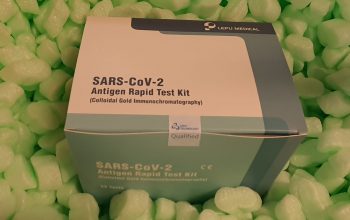Alzheimer’s Disease
Common or sporadic Alzheimer’s disease (AD) occurs late in life, usually after the age of 70, and accounts for the vast majority of the cases. A majority of these late-onset AD patients are associated with primary defects in mitochondrial function. Only about 5% of the AD cases are of the familial variety, which also occurs early in life but which are linked to nuclear (Mendelian) genetic inheritance of mutations in the processing of amyloid protein. Lewy body dementia, a disease of uncertain etiology, accounts for the remainder of AD patients. Lewy bodies are also diagnostic for Parkinson’s disease, and the evidence indicates that they are cellular inclusions of incompletely digested mitochondria .
Decreased oxidative phosphorylation, energy metabolism and neuronal loss are prominent in AD patients. MitoKor has identified specific changes in mitochondrial function that offer methods for diagnosis and treatment of AD. A decrease in the activity of Complex IV (cytochrome oxidase) and an increase in oxidative stress have been identified in Alzheimer’s patients relative to cognitively-normal individuals of comparable age. The Company believes that improving mitochondrial function using novel mitochondrially-directed therapeutic drugs is key to developing effective treatments to halt or slow the progression of this disease.
Using its MitoMetrics™ platform, MitoKor has discovered several small molecule leads that have moderated the rates of apoptosis usually shown by Alzeimer’s disease cybrids. These agents act by maintaining and improving mitochondrial function and avoid the pitfalls of other mitochondrially active drugs, such as classical antioxidant therapies. A number of new compound entities from different chemical classes have been identified, and further development is ongoing for several of these small molecule drug candidates.
Clinical Developments
MitoKor has an agreement with Wyeth Corporation related to the development of estrogens for treatment of Alzheimer’s disease and related dementias. Wyeth is funding a Phase III clinical trial evaluating the use of estrogens in the prevention and treatment of Alzheimer’s disease in post-menopausal women. This trial is part of the Women’s Health Initiative Study, and originally enrolled over 7,500 women.
Parkinson’s Disease
Idiopathic Parkinson’s disease (PD) is a common neurodegenerative disorder that affects more than 1% of all individuals over the age of 55. Like Alzheimer’s disease, except in very rare families, most cases of PD follow no recognizable nuclear genetic pattern and are thought to be sporadic. Relatives of PD patients, however, have a higher risk of developing the disorder than the general population, suggesting the presence of some undefined genetic or, perhaps, an environmental factor. Indeed, the chronic exposure to low doses of the insecticide rotenone – a specific inhibitor of complex I in the mitochondrial electron transport system – induces a Parkinson’s like disorder in rodents, complete with Lewy bodies and the specific loss of the same dopaminergic neurons in the substantia nigra found in the human disease. Similarly, it was shown a decade ago that a contaminant in street drugs (N-methyl-4-phenyl-1,2,5,6-tetrahydropyridine; MPTP) also caused parkinsonism via inhibition of same mitochondrial respiratory complex. MitoKor scientists and others have subsequently confirmed that Complex I activity is defective in multiple tissues from PD patients, and that there is a maternal association in the inheritance of PD, suggesting a mitochondrial basis for this disease.
Complex I is a bioenergetic enzyme that serves as the principal starting point of the electron transfer chain, through which electrons are shuttled to reduce oxygen and form water and ATP. Structurally, it is a multi-subunit protein complex of over 40 known subunits encoded by both nuclear and mitochondrial DNA. MitoKor has transferred mitochondria from the blood of Parkinson’s disease patients into its proprietary rho0 cell lines. The resultant cybrid cell lines contain inter alia impaired mitochondria from patients. These Parkinson’s cybrid cells are very sensitive to MPTP toxicity and also faithfully model the phenotype of Parkinson’s disease. Hence, these cell lines are useful for high volume screening of novel drug candidates and for the proteomic and genomic studies outlined above. MitoKor is thus the first commercial entity to have developed a cellular mechanistic model of Parkinson’s disease.
Clinical Developments
The preclinical data show that non-feminizing estrogens potect dopaminergic neurons from the mitochondrial toxin, MPTP. MITO-4509, an orally available minimally-feminizing estrogen analog, has successfully completed phase I clinical trials. This molecule has also shown protection of cortical neurons and preservation of mitochondrial function from oxidative stress. As such, it may have utility in both Parkinson’s and Alzheimer’s diseases.



